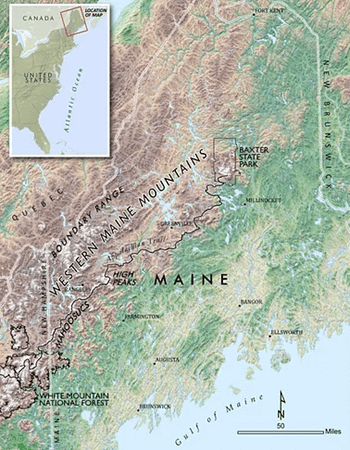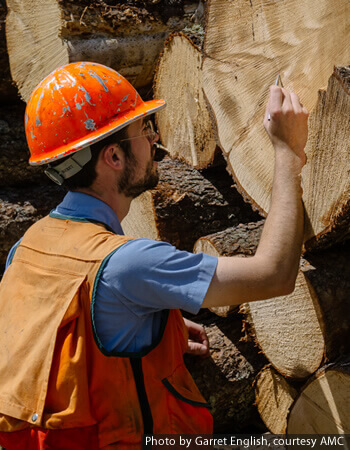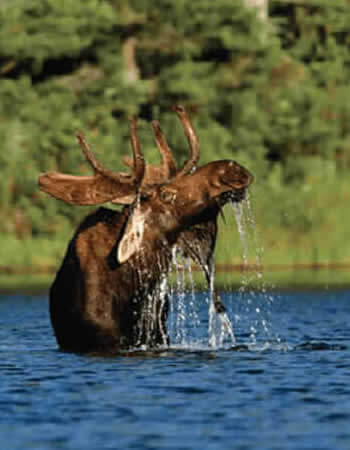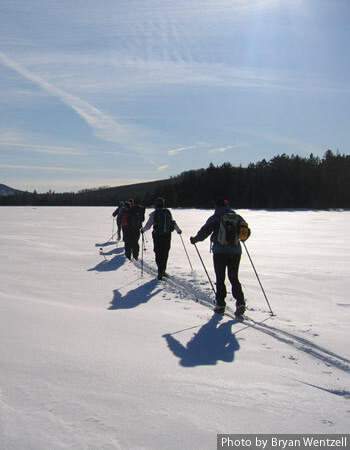
The Mountain Region
Ecology
FROM HIGH-MOUNTAIN BOREAL FORESTS that stretch for 250 miles to low elevation hardwoods, the forests of Maine’s mountains support diverse and abundant wildlife. The Mountains of the Dawn are a vital part of the vast Maine forest that is home to:
- The largest moose population in the lower 48 states;
- The elusive, rare, and endangered Canada lynx;
- Essential breeding grounds for many species of birds including warblers, thrushes, and hawks that migrate from distant regions;
- Rivers that harbor the last native populations of the endangered Atlantic salmon in the US;
- Pristine lakes, ponds, and streams supporting the nation’s only population of wild, self-reproducing brook trout.

Community
The region’s communities are closely tied to the landscape. Approximately 160,000 people in small towns and rural communities call this place home. Its forestlands, largely in private ownership, provide valuable, renewable forest products that continue to be a critical piece of the economy. Though long a destination for visitors, recreation, and tourism is increasingly seen as a source for job growth for the local economy. Within a day’s drive of 70 million people, the Maine Mountain region has abundant lakes, ponds, rivers and streams, recreational trails, ski areas, historic and cultural sites, and scenic drives. It is a top destination in the Northeast for hiking, mountain biking, camping, canoeing, skiing, hunting, fishing, and snowmobiling. Conservation of important forestlands provides multiple community benefits including stabilizing the land base for long-term sustainable forestry, securing public access for recreation, and conserving critical wildlife habitat.



